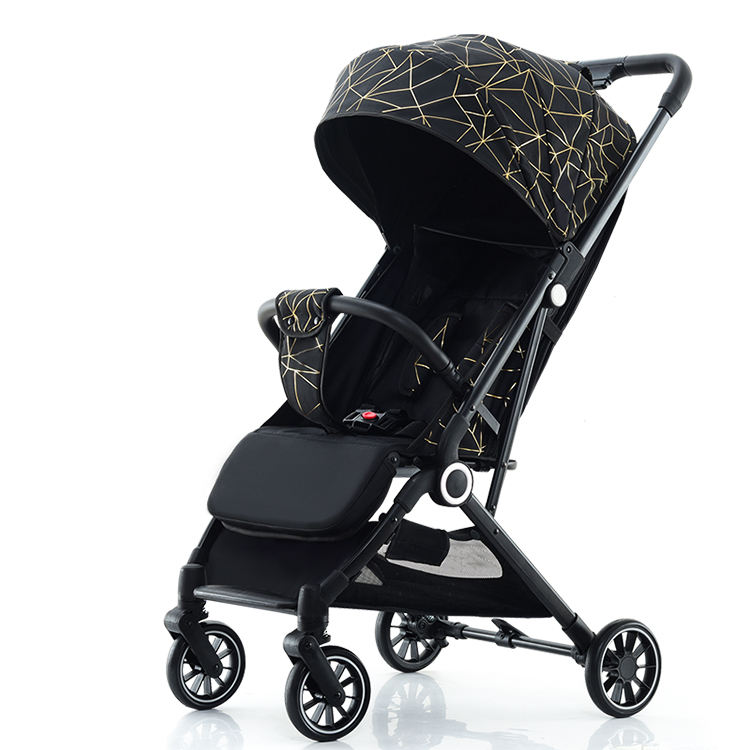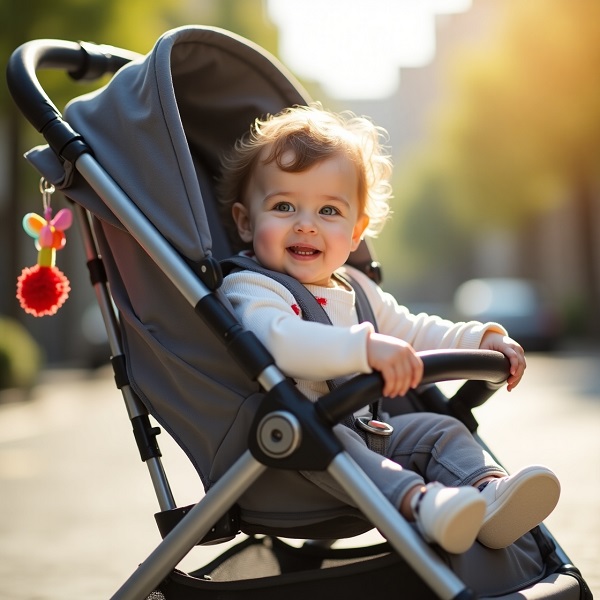Most parents obsess over stroller features—reclining seats, one-handed folding, all-terrain wheels—but there’s one specification that rarely gets the attention it deserves: the weight limit. It’s printed in tiny type on the frame or buried in the manual, yet this single number determines everything from safety to longevity.
Consider this: A stroller pushed beyond its weight limit is like a chair designed for 150 pounds holding 250. It might work… until it doesn’t. Frames bend. Brakes fail. Wheels buckle.
This isn’t about paranoia—it’s about physics. Stroller weight limits aren’t arbitrary; they’re calculated based on structural integrity, balance, and even crash-test standards.
This comprehensive guide offers a detailed examination of stroller weight limits—from how they vary by stroller type to the practical implications for everyday use and travel.
What Happens If Exceeds the Weight Limit?
Pushing a stroller beyond its recommended weight capacity might seem harmless at first—after all, what’s an extra 5 or 10 pounds? But much like overloading a piece of luggage until the zipper strains, the consequences aren’t always immediate, and that’s what makes them dangerous.
The most critical concern is compromised safety. Stroller frames, joints, and wheel axles are engineered to support up to a specific weight. A stroller that is too heavily loaded becomes top-heavy and may be more likely to tip backward. Imagine a stroller wheel buckling mid-step because its axle was never designed to handle that load.
Even if the frame holds, functionality degrades. Overloaded strollers become harder to maneuver, requiring more force to turn or stop. Braking systems, calibrated for a certain weight range, may fail to hold the stroller stationary on inclines. And suspension systems (common in all-terrain models) lose their ability to absorb shocks, transferring every bump directly to your child.
Over time, overloading also accelerates mechanical wear. Stress on joints, hinges, and folding mechanisms can lead to early structural fatigue, increasing the likelihood of frame failure or wheel detachment. Even if a stroller appears to be holding up under extra weight, microfractures and stress points may be developing beneath the surface.
Moreover, most brands explicitly state that exceeding weight limits voids warranties—for good reason. If an overloaded stroller fails and causes injury, liability shifts entirely to the parent.
This isn’t scare-mongering; it’s a documented risk. For example, the ASTM International stroller safety standard (F833) includes weight limit testing precisely because overload scenarios can lead to tip-overs or structural failures.
What Is the Weight Limit for Different Stroller Types?

Standard Umbrella Strollers (15-50 lbs)
The lightweight favorites for quick errands hide a sobering truth: many budget models top out at just 35-40 lbs—the average weight of a 3-year-old.
Their minimalist frames sacrifice stability for portability. Push these limits, and you’ll notice immediate instability; the stroller becomes tippy on slopes, with a terrifying tendency to rear up when braking suddenly.
Full-Size Everyday Strollers (50-75 lbs)
Workhorse models in this category often advertise generous limits, but there’s fine print. That 75 lb capacity? It usually includes the child plus any storage. Load up the under-seat basket with groceries, and you might accidentally exceed the limit with a 4-year-old on board.
Jogging Strollers (65-100 lbs)
Built for active parents, joggers boast heavy-duty frames and suspension. But here’s what marketing won’t tell you: that 100 lb limit assumes perfect conditions.
Actual stability plummets when jogging off-road with a heavy child. The front wheel can wobble dangerously at speed, and the added inertia makes sudden stops risky.
Double/Tandem Strollers (80-110 lbs combined)
The math gets tricky here. A stroller rated for 100 lbs total doesn’t mean 50 lbs per seat—it’s about weight distribution.
Uneven loading (like a 40 lb toddler + 30 lb infant) can strain the frame asymmetrically. Parents often discover too late that their “roomy” double stroller becomes unstable when both children hit preschool sizes simultaneously.
This is where many parents get caught off guard. Although the stroller base may support up to 50 lbs, the detachable infant seat typically has a lower weight limit—usually around 30–35 lbs. Exceeding that in car seat mode can create dangerous leverage, making the whole system top-heavy and at risk of tipping over.
Stroller manufacturers’ weight limits aren’t goals—they’re strict boundaries. A 50 lb limit doesn’t mean the stroller works perfectly at 49 lbs and fails at 51. Performance degrades gradually:
- At 90% capacity, you’ll notice slower braking
- At 100%, maneuverability suffers
- Beyond 100%, you’re gambling with structural integrity
Do Weight Limits Include Storage Space and Accessories?
A common misconception among parents is that a stroller’s listed weight limit refers to the entire unit’s capacity—including the storage basket, handlebar attachments, and any additional gear tucked into cup holders or hanging organizers. In reality, weight limits are typically calculated for the child’s seating area only, unless explicitly stated otherwise in the product documentation.
Most strollers specify a separate weight limit for storage compartments, such as the undercarriage basket. This limit is usually far lower—often around 10 to 15 pounds—and exceeding it can negatively affect the stroller’s balance and structural integrity.
Hanging heavy bags or accessories from the handlebars poses another risk. While convenient, this practice can shift the stroller’s center of gravity backward, making it more prone to tipping—especially when the seat is unoccupied or occupied by a lighter child. Some stroller manuals specifically warn against placing items on the handlebars for this very reason.
It’s also worth noting that excess weight from gear and accessories doesn’t just compromise safety—it can affect maneuverability, make pushing the stroller more difficult, and accelerate mechanical wear on the wheels and frame. In essence, while the stroller might seem like a convenient place to carry “everything,” it was never designed to function as a rolling cargo cart.
What’s the Best Stroller for Bigger or Older Toddlers?
The average 4-year-old stands 40 inches tall and weighs 35-40 pounds, dimensions that test the limits of most standard strollers.
The foundation of any quality stroller for larger toddlers begins with its structural design. Look for models featuring steel or reinforced aluminum frames, as these materials resist the bending and warping that can occur with plastic composite frames under heavier loads. A wide wheelbase—at least 18 inches between rear wheels—provides essential stability, preventing dangerous tipping when children shift their weight.
A stroller for an older toddler should have a deeper, taller seat to accommodate longer legs and a growing torso. A stroller with a shallow seat or short canopy may technically support your child’s weight, but it won’t accommodate them comfortably or safely.
Among the most suitable options for heavier or older toddlers are full-size strollers with extended weight capacity. These are often the first place to look, as many of them support children up to 65 pounds and are designed for long-term use.
Another excellent option is the jogging stroller, even if you don’t plan to jog. Jogging strollers are built to handle higher weight loads—commonly up to 75 pounds—and are equipped with robust frames, air-filled tires, and enhanced shock absorption systems.
What Are the Airline Rules for Stroller Weight and Size Limits?

Most airlines follow a general policy that allows strollers to be checked at the gate or during check-in, but there are size guidelines to consider. Typically, a stroller must be able to fit into the overhead bin or be small enough to qualify as a “gate-check” item.
Strollers that fold compactly—such as umbrella or lightweight strollers—usually meet the size restrictions for gate-checking. Full-size strollers, especially those with larger wheels or complex folding mechanisms, may require being checked as luggage. However, some airlines may still allow them at the gate if they meet their specific dimensions, typically around 22 x 15 x 9 inches when folded.
In addition, most airlines allow strollers to be checked for free if the child is under the age of two, even if it exceeds carry-on size limits.
Airlines generally do not impose specific weight limits for strollers, but they do have rules for how much luggage you can bring on board or check in, and this can indirectly impact your stroller.
Be mindful that any accessories attached to your stroller—such as baskets, cup holders, or organizers—may not be covered by the airline’s stroller policy. It’s a good idea to remove these before checking the stroller to avoid damage or confusion during the boarding process.
If you frequently travel by air, consider investing in a lightweight stroller that is compact, folds easily, and meets most airline requirements for gate-checking. These models are generally easier to maneuver in airports and offer convenience without compromising safety or comfort.
When Should You Stop Using a Stroller?
A stroller’s weight limit should always guide your decision. Once your child exceeds the manufacturer’s maximum weight or height specification, the stroller is no longer safe to use—even if they’re still within the toddler age range.
From a physical and developmental standpoint, most children begin walking confidently between 12 and 18 months and continue building stamina and coordination throughout their toddler years. By the time a child reaches 3 to 4 years old, they generally have the strength and balance to walk independently for longer periods.
The sweet spot? When your child can walk half a mile (about 10-15 minutes) without begging to be carried, while still having the emotional regulation to handle crowded spaces.
If your child still tires easily or has mobility challenges, occasional stroller use might still be appropriate—even past the typical age range—so long as the equipment is rated to accommodate them. Smart parents keep a compact stroller folded in the trunk for those “just in case” moments when little legs or big crowds demand it.
How to Find Your Stroller’s Weight Limit?
Manufacturers tend to hide weight limits in less-than-obvious places. The most common locations include a small embossed stamp near the rear axle, a fading sticker underneath the seat, or buried in the manual (the one you may have recycled right after assembling the stroller).
When reading the specifications, it’s important to distinguish between total stroller capacity and individual component limits. For example, a double stroller might have a 100-pound combined weight capacity but only allow 50 pounds per seat.
Most strollers list two key figures:
– Child weight limit – The maximum your toddler should weigh while riding.
– Total load capacity – Includes the child plus anything in storage baskets or hanging from handles.
If the label has worn off, your next best bet is the manufacturer’s website—search for your exact model number, as even slight variations can have different weight capacities.
Conclusion
Weight limits are not simply technical suggestions—they are engineered boundaries that protect your child, preserve the stroller’s structural integrity, and ensure smooth, reliable performance over time.
As your child grows and your lifestyle evolves, your stroller must evolve with you. That might mean switching to a high-capacity model for a larger toddler, adjusting how you load accessories, or knowing when it’s time to retire the stroller altogether.
In the end, a well-chosen stroller supports more than just your child’s weight—it supports your peace of mind. And when used within its limits, it becomes one of the most dependable tools in your parenting toolkit.
So check those labels, respect the limits, and enjoy the ride—while it lasts.
Recommended Related Articles:
- Top 15 Stroller Manufacturers for 2025
- How to Choose a Stroller?
- Pram Vs Stroller: What’s the Difference?
- When Do Kids Stop Using Strollers?
- What Kind of Stroller Can I Take on a Plane?
- Stroller Safety Standards: A Complete Guide
- Understand Different Types of Strollers
- Best Stroller for Big Kids: A Complete Guide
- Can a Baby Sleep in a Stroller?













